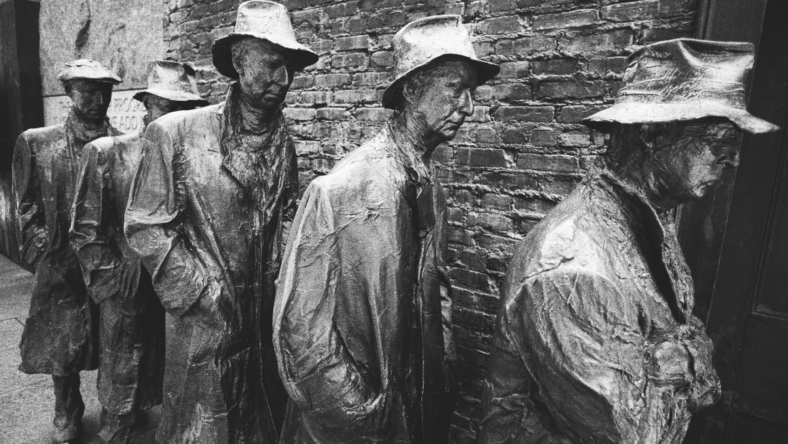
Are things better or worse than they were during the Great Depression?
Hello dear readers of The Finance Genie!
Have you ever watched those old black-and-white movies set in the Great Depression? Characters dressed in dated clothing, queuing for work or soup kitchens. It’s a striking image, one that makes us wonder about the economic challenges of that era.
One intriguing question has been buzzing around lately: how much would an average American in 2021 need to earn annually to match the average middle-class income of a person living at the height of the Great Depression? The answer might surprise you!
The Middle-Class Earnings During the Great Depression
Let’s hop in our time machine and travel back to the 1930s. The Great Depression was a challenging period in U.S. history. Money was tight, jobs scarce, and many families struggled to make ends meet. In terms of numbers, family incomes saw a steep drop. By 1933, an average family’s income was about $1,500, down from $2,300 in 1928. Think about that for a moment. That’s a 40% decrease in just five years!
Inflation: The Value of a Dollar Then and Now
But hold on, we can’t directly compare those numbers to today’s income. Why? Because the value of money changes over time. $1 in 1933 doesn’t have the same purchasing power as $1 today. This concept is known as inflation.
To understand how the 1930s dollar compares to today’s, we need to factor in inflation rates. The U.S. Bureau of Labor Statistics provides a handy tool called the Consumer Price Index (CPI) inflation calculator. According to the CPI, $1 from 1933 would be roughly equivalent to $20.09 in 2021. That’s a huge difference!
So, when we adjust the 1933 average income for inflation, it translates to around $30,135 in 2021 dollars.
How Does That Compare to Today’s Earnings?
Now, let’s bring it back to the present. How does that $30,135 measure up to our current middle-class incomes? Well, in 2021, the median household income in the U.S. stood at about $68,700. That’s more than double the adjusted income from the Great Depression!
What Does This All Mean?
These figures give us a fascinating glimpse into the economic landscapes of two very different times. While $30,135 might sound like a small sum to many of us today, for families in the 1930s, it represented the harsh reality of decreased earnings and increased challenges.
It’s crucial for us to appreciate the progress we’ve made since then, but also to remain mindful of the importance of financial literacy. Economic tides can shift, and being prepared and informed can make all the difference.
So, the next time you’re watching an old movie or reading about the Great Depression, you’ll have a little more context about what life might have been like — in dollars and cents!
NEXT: Financial Hurdles Awaiting College Graduates
Disclosure: The information provided by The Financial Genie is for informational purposes only. It should not be considered legal or financial advice. You should consult with an attorney or other professional to determine what may be best for your individual needs. The Financial Genie does not make any guarantee or other promise as to any results that may be obtained from using our content. No one should make any investment decision without first consulting his or her own financial advisor and conducting his or her own research and due diligence. Additionally, some of the organizations with products on our site may pay us a referral fee or affiliate commission when you click to apply for those products.